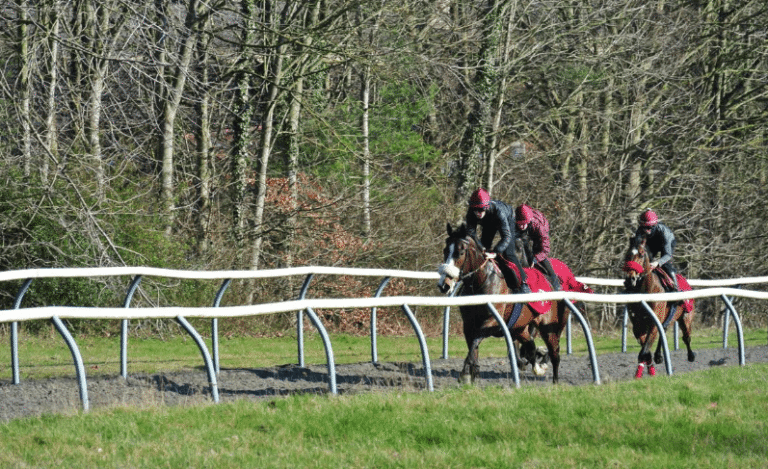When race day arrives, spectators see sleek, powerful horses galloping at breathtaking speeds, guided by skilled jockeys. What they don’t see, however, is the intense training and preparation that goes on behind the scenes. Horse racing training is a meticulous process that blends science, discipline, and care to prepare horses for the physical and mental demands of competition.
In this article, we’ll take a deep dive into how horse racing training works, exploring the routines, techniques, and behind-the-scenes effort that shapes champions.
1. The Role of the Trainer
At the center of the process is the trainer, who designs and oversees a horse’s conditioning program. Trainers act as managers, balancing physical fitness, mental readiness, diet, rest, and race strategy. Their job is not only to build strength and stamina but also to uncover each horse’s unique potential—whether it’s speed for short sprints or endurance for long-distance races.
2. Starting Young: Breaking and Early Training
Racehorses usually begin their training as yearlings (around 18 months old). This process starts with breaking, which means teaching the horse to:
- Wear tack (saddle, bridle, bit).
- Respond to basic commands.
- Accept a rider on its back.
Early training is gentle, focusing on trust, handling, and introducing young horses to the track. Pushing too hard too soon can risk injury or mental stress, so trainers carefully balance patience and progress.
See also: The Role of the Owner in Horse Racing
3. Building Fitness and Conditioning
Once the basics are established, the focus shifts to conditioning programs that mirror human athletic training. Key elements include:
- Gallops: Horses run at a steady pace to build stamina.
- Breezing: Short, faster workouts designed to increase speed and lung capacity.
- Interval Training: Alternating periods of fast and slow gallops to develop endurance.
- Swimming or Hill Work: Low-impact exercises to build muscle while reducing stress on joints.
Each horse has a personalized program based on its abilities and goals.
4. Diet and Nutrition
A horse’s diet is as important as its workouts. Racehorses burn massive amounts of energy and require a carefully balanced feeding program:
- High-Quality Grains (Oats, Barley, Corn): Provide energy.
- Hay and Forage: Support digestion and gut health.
- Supplements: Vitamins, minerals, and electrolytes to aid recovery.
- Water and Hydration: Monitored closely to prevent dehydration, especially after intense exercise.
Nutritionists and trainers work together to ensure horses maintain peak fitness without losing weight or condition.
5. Rest, Recovery, and Injury Prevention
Just like human athletes, horses need rest and recovery to avoid overtraining. Daily schedules include:
- Cooling down: Walking after gallops to relax muscles.
- Massage and Therapy: Some stables use physiotherapists or even acupuncture.
- Regular Vet Checks: To spot potential injuries early.
- Rest Days: Horses may get lighter training days or complete rest between workouts.
Preventing injuries is vital since even minor strains can sideline a horse from competition.
6. Mental Training and Discipline
Racehorses must also be mentally prepared for the chaos of race day—crowds, noise, and competition. Trainers use:
- Schooling at the Gate: Practicing starts from the stalls to reduce anxiety.
- Exposure to Tracks: Allowing horses to familiarize themselves with different racecourses.
- Calm Handling: Grooms and riders develop close bonds with horses to build trust and confidence.
A horse that is both calm and focused often performs better than one that is overly nervous or aggressive.
7. Teamwork Behind the Scenes
Training isn’t just about the horse and trainer—it involves an entire team:
- Exercise Riders: Handle daily gallops and workouts.
- Grooms: Provide daily care, grooming, and monitoring.
- Veterinarians & Farriers: Ensure horses stay healthy and sound.
- Stable Staff: Manage feeding, cleaning, and horse welfare.
Each member plays a vital role in shaping a horse into a race-ready athlete.
8. Preparing for Race Day
In the days leading up to a race, trainers fine-tune the horse’s routine:
- Tapering Workouts: Reducing intensity to keep horses fresh.
- Final Breeze: A short, sharp gallop a few days before the race to sharpen speed.
- Jockey Strategy Sessions: Trainers and jockeys discuss tactics, such as when to push or hold back during the race.
On race day, everything comes together—months (or even years) of preparation condensed into a few minutes of competition.
9. The Balance of Science and Instinct
Modern horse racing training blends sports science and traditional horsemanship. Trainers rely on data such as heart rate monitors, GPS tracking, and blood tests to measure progress, but they also trust their instincts, observing how a horse moves, eats, and behaves.
Great trainers know that every horse is different, requiring a personalized approach rather than a one-size-fits-all method.
Conclusion
The glamour of horse racing often hides the dedication, hard work, and expertise that happens behind the scenes. Training a racehorse is a careful blend of conditioning, nutrition, recovery, mental preparation, and teamwork. It’s a process that transforms spirited animals into elite athletes capable of competing at the highest levels.
Behind every race-day victory lies months—or even years—of quiet, relentless effort from trainers, grooms, riders, and most importantly, the horses themselves.
Horse racing may be decided in a matter of minutes, but its success is built day by day, mile by mile, in the unseen world of training.
